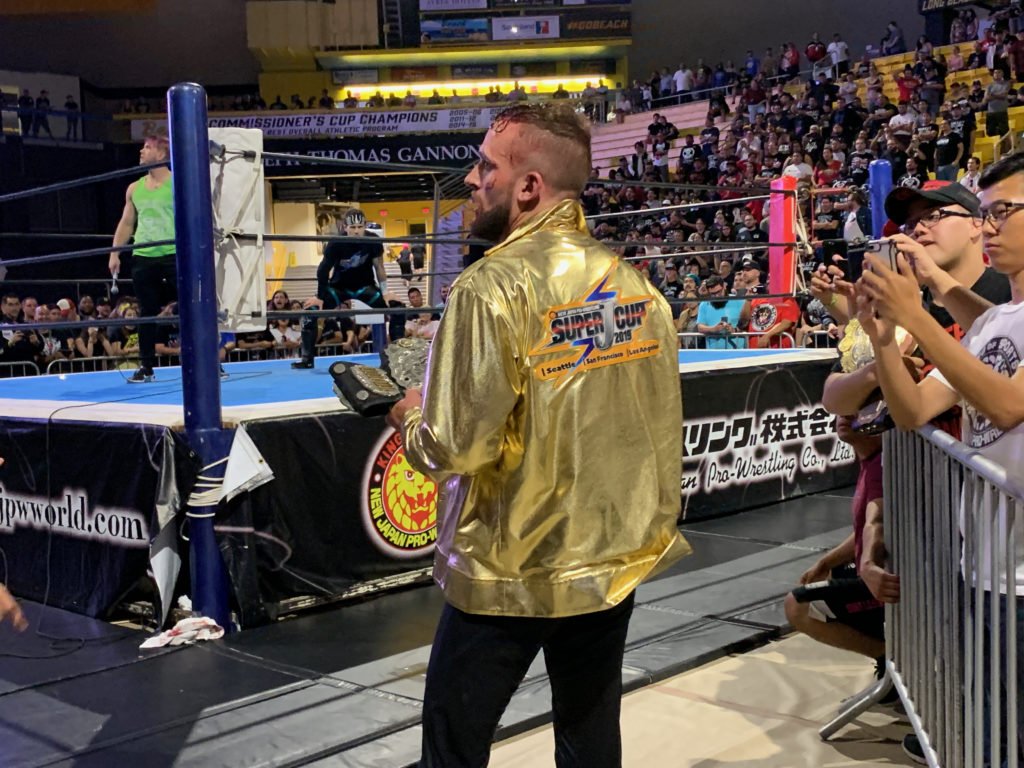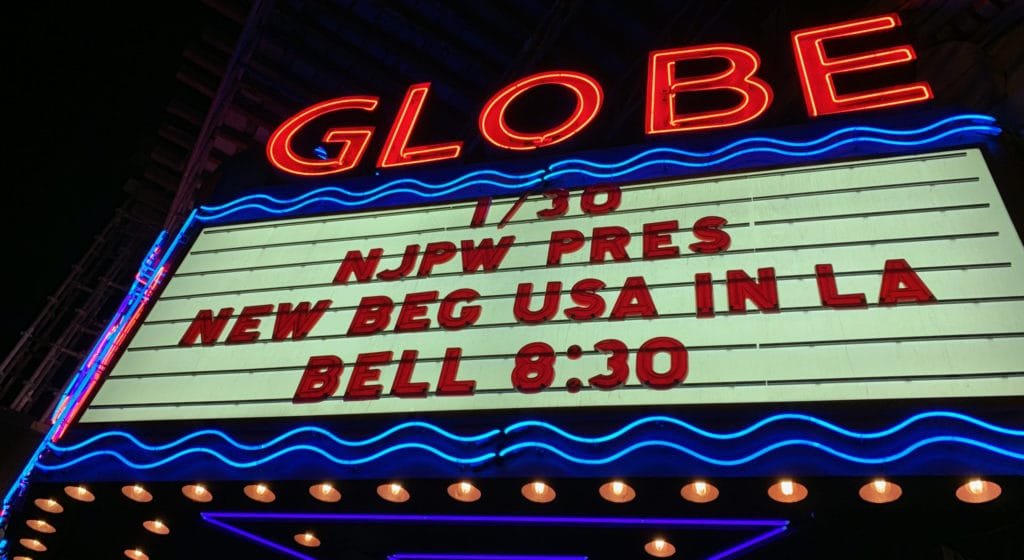The Meij Era in New Japan is Finished. Now We Know Why.

The Meij Era in New Japan is Finished. Now We Know Why.
With Takami Ohbari taking over, it remains to be seen if NJPW’s Western expansion gets grounded or takes off for full flight
By: Carlos Toro
When Harold George Meij was first introduced to the NJPW masses in the spring of 2018 as the promotion’s new president, it signaled a sea of change for a promotion that was known for having the best pro wrestling on the planet, though it wasn’t necessarily accessible to fans in the west. Meij’s stated goals were expansion in the United States, bringing top talent from Japan to showcase their distinct style of puroresu while creating a dojo system in Los Angeles that mirrors the strength of Tokyo’s.

Thom Fain
That would be followed by a successful two-day Wrestle Kingdom in Tokyo this past January (a first) and an increasing online footprint as social media buzz dominates big match events. All the while, the subscriber count for njpwworld.com continued to climb.
Everything seemed to be going right for Meij – and then All Elite Wrestling (AEW) happened. The elephant in the room is a string of shortcomings in Meij’s U.S. expansion strategy. No doubt a huge part of NJPW’s appeal to America was the cadre of top talents in Kenny Omega, Nick & Matt Jackson, “Hangman” Adam Page and Cody Rhodes – collectively known as “The Elite.” When they failed to reach an agreement with Meij on new contracts after Wrestle Kingdom 13 in 2019, they le t to create startup promotion AEW, effectively dealing a massive blow to the company’s expansion efforts.
In hindsight, Meij’s days were numbered after The Elite’s departure. “So now, the forbidden door is closed? But I don’t think it needs to be closed,” said AEW wrestler Chris Jericho following his match at Wrestle Kingdom 14. “I had the chance over the last two years to wrestle four amazing talents [in Japan] I wanted to… All four are tremendous, and I would like to wrestle all of them again…”
For some time, Meij was on a path to success. Nobody can forget the balls it took to stage a sold-out show at Madison Square Garden in 2019 in prime McMahon territory.
“Obviously, Kenny Omega and I are in AEW but there’s no reason why we can’t continue to work together in New Japan,” said Jericho. “Put aside all the hurt feelings, put aside all the egos, put aside all the issues and politics and concentrate on great wrestling matches and big business.”
Bushiroad Makes A Change
NJPW’s change of course became official when the board of directors inside Bushiroad (NJPW’s parent company), announced on September 29 that Meij would be leaving his position. Citing “a change in NJPW’s directorship,” the company announced that as of October 23, Takami Ohbari would replace Meij as president. In the following weeks, it was revealed during a Bushiroad stockholders meeting that Meij did not resign from his position. Instead, he was fired by Bushiroad founder Takaaki Kidani. Meij’s departure comes just two years after his May 2018 hiring, when he had been championed by the company as its first non-Japanese president. Meanwhile, AEW has been able to secure a major television deal with TNT in the U.S. and is firmly entrenched as the No. 2 wrestling promotion there behind WWE, sometimes drawing 1 million viewers per episode. Rumors have swirled over who is at fault for NJPW’s inability to retain its key gaijin talent – it’s been reported by various sources that Meij allowed The Elite to walk without an offer. His presence atop NJPW’s pecking order has since been blamed for blocking a talent share partnership between AEW and NJPW. According to a source inside Bushiroad who spoke with Monthly Puroresu, an unappealing offer was made to Kenny Omega and The Young Bucks around summer of 2018 as hype for All-In was starting to take off. AEW did not exist yet. Harold Meij was new to NJPW, and a lot of attitudes from within the company—including a few U.S. wrestlers themselves—were upset at Meij’s tactics of corporate management and his directives to shake up infrastructure to improve management. He also began dictating changes to ring personas (such as excessive bad language, spitting water, etc)
As a result, U.S. talent began to develop some animosity towards New Japan. Meanwhile, njpwworld.com’s international streaming service continued lagging behind other turnkey apps such as Fite TV, with no updates in sight. That put Meij in the precarious position of figuring out how to both keep his U.S. talent happy and get a new broadcast deal signed.
Dave Meltzer of Wrestling Observer Newsletter broke news of the tension surrounding The Elite’s contract negotiations. Stakeholders started to question Naoki Sugabayashi, NJPW’s chairman since 2013, about the circumstances surrounding The Elite’s departure. From that point on, Meij’s time was numbered. To compare it with something like Matchroom Boxing’s U.S. expansion using the DAZN streaming service, New Japan’s potential with fans in the West can’t be reached without a television deal. In essence, no matter how much money NJPW invests in the U.S. market, the ceiling on its stateside growth will remain low.
“I can see the amount of money we can make together, with AEW and New Japan. Both here in Japan and in the U.S. and Canada, and England, Australia and all around the world,” said Jericho. “So even though I beat Tanahashi, I would be more than willing to wrestle him again any time, and I would be more than willing to give him an AEW title shot – and Okada, and Naito, and Suzuki, and Ibushi and Ospreay,” Jericho has said. “I don’t own New Japan, I’m not the President of New Japan. And I don’t own AEW but I’m going to do everything I can to create a bridge to do more amazing matches, and amazing big business wrestling shows.”

Thom Fain
Now that Ohbari has taken over, it puts New Japan in a unique and fairly difficult spot. Coupled with the pandemic and a so-so U.S. expansion effort, Ohbari has an edict to elevate NJPW’s global reach worldwide.
With the global pandemic still raging, tours abroad are not an option. NJPW has called an audible by broadcasting weekly U.S. wrestling shows on its streaming service from a closed studio without fans. Overcoming an absent TV deal and absent fans is clearly the biggest challenge right now for NJPW’s new leadership. If it can’t secure a U.S. television deal, expectations for New Japan’s western expansion will be further dampened.
In terms of creating new stars that U.S. fans can latch on to, there are two camps with different thoughts. Over in Japan, established names such as Ospreay, Jay White and Juice Robinson are doing big business. Inside the United States on its weekly New Japan Strong show, a fresh batch of faces has entered the scene, endearing themselves to fans. Talents like Karl Fredericks, Danny LimeLight, Clark Connors and Alex Coughlin provide a solid base of new stars to build upon. However, the competition for streaming viewership makes it nearly impossible for a wrestling promotion to get to the level of an AEW without a TV deal.
As a vaccine nears the market and travel restrictions begin to lift in 2021, it’ll be interesting to see what Ohbari has in store for NJPW’s touring schedule. Is IWGP U.S. Championship has rarely been a focus in recent tours, but it could be used as a catalyst to rekindle some of the fire that died down as a result of Meij’s business dealings.
For the “The New Era” of NJPW USA, it seems as if we’ll have to wait a little while longer to understand if prospects turn to legends, or if old spirits will finally break, taking with them the dying hope of puroresu paradise.
This article first appeared in Monthly Puroresu Issue #2

